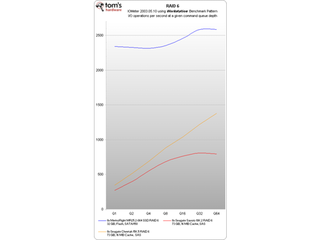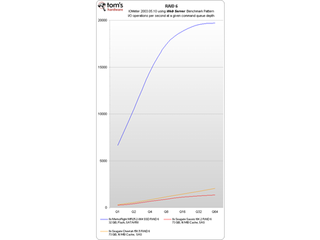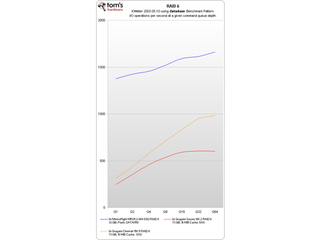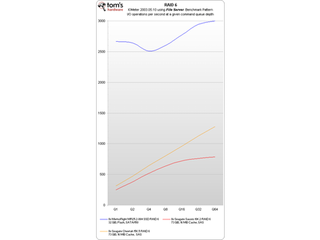Will SSDs Take Over The Enterprise?
RAID 6 I/O Performance
Finally, we decided to also include RAID 6 performance, which means double redundancy. Where RAID 5 creates parity information for the information stored across seven hard drives and stores it on the eighth drive—rotating the parity drive to avoid storing all parity information on only one drive—RAID 6 creates two parity sets. This allows for two drives to fail without losing data.
The I/O performance for the MemoRight flash SSDs is still superior, but this time only by a magnitude of 1.5 to 2.5. Clearly, the double redundancy has its impact on I/O performance in RAID 6. The flash drives are still the best choice, though you should consider whether or not 1.5x to 2.5x performance is worth several times the cost and much less capacity.




Stay on the Cutting Edge
Join the experts who read Tom's Hardware for the inside track on enthusiast PC tech news — and have for over 25 years. We'll send breaking news and in-depth reviews of CPUs, GPUs, AI, maker hardware and more straight to your inbox.
Most Popular

